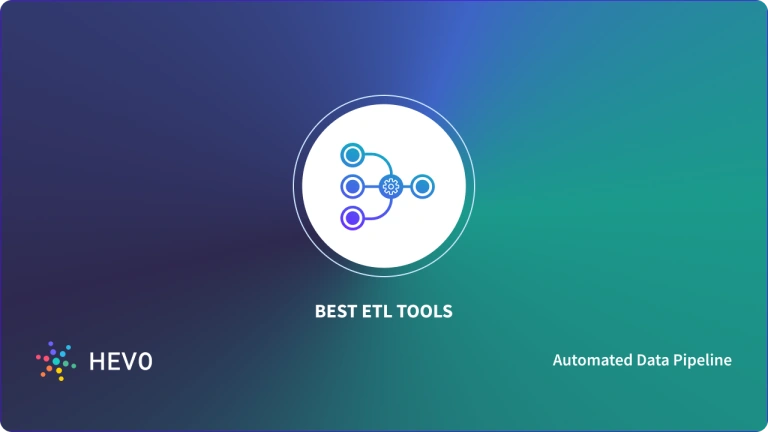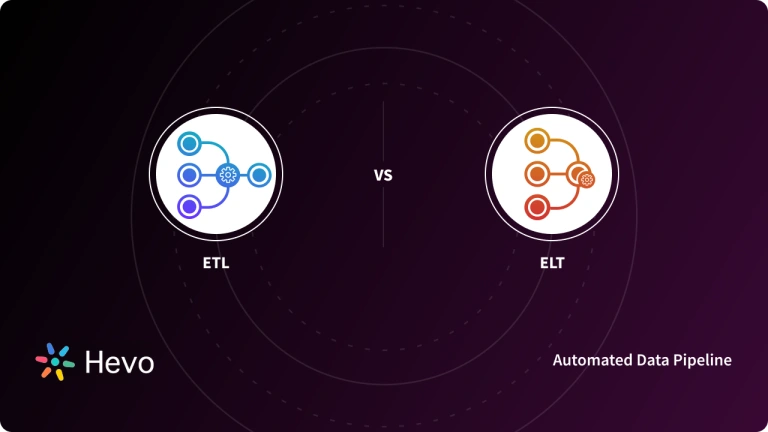Data warehousing and big data analytics may have seemed like a novel idea in the past. However, today, businesses worldwide require the most critical tools needed to cater to various services. Data warehouse tools are essential for managing the modern data analytics process in firms of all sizes. These tools are compatible with various technologies, such as artificial intelligence (AI) and machine learning (ML), to improve performance.
This article lists the robust and popular data warehouse tools used in the market. You will also gain a holistic view of data warehousing tools and understand the need for these tools in data warehousing.
Table of Contents
What Are Data Warehouse Tools?
Data warehouse tools are specialized software tools designed for storing, managing, and analyzing large volumes of data stored in an environment known as a data warehouse. The tools assist organizations in consolidating vast amounts of data from different sources into some central repository to make querying, reporting, or analyzing that data more efficient.
Key Types of Data Warehouse Tools
- ETL Tools (Extract, Transform, Load): These tools can extract data from source systems, transform it into a suitable format, and load it into the data warehouse.
- Data Integration Tools: These can combine data from different sources and ensure it is available for analysis.
- Data Modeling Tools: Design and visualize data schemas and relationships within the data warehouse.
- Data Governance Tools: These tools can ensure data quality, consistency, compliance, and data quality checks within the data warehouse environment.
Such tools collectively support the effective management and utilization of data, driving business intelligence and operational efficiency.
Hevo streamlines the data integration and transformation process, enhancing the functionality of data warehouse tools by ensuring data is prepared and loaded efficiently. It has a fault-tolerant architecture which safeguards your data.
Check out some of the salient features of Hevo:
- Seamless Data Integration: Connects to diverse data sources for smooth data flow into data warehouses.
- Automated ETL Processes: Automates extraction, transformation, and loading to reduce manual effort.
- Scalability and Performance: Efficiently handles large data volumes and supports high-performance processing.
Join our 2000+ happy customers like Hornblower, Deliverr and check out what they have to say about us.
Get Started with Hevo for FreeWhy Do We Use Data Warehouse Tools?

A data warehouse is a storehouse for information gathered from one or more sources. The role of a data warehouse is to streamline data for business intelligence (BI). An e-commerce business, for example, can utilize a data warehouse to integrate and aggregate consumer data. The ETL workflow in the data warehouse, on the other hand, is critical for the seamless transit of data from one architectural tier to the next.
So, you can see how data warehousing has become critical for large and medium-sized businesses. Apart from combining data from many sources, a data warehouse makes it easy for your team to access data and gain insights from the information.
Businesses can leverage data warehouse tools for the following purposes:
- To extract information from various sources and transform it before loading it into different data warehouses.
- Using data warehouse reporting tools, you can establish relationships within your data for data warehouse modeling.
- Data warehouse automation tools enable querying your data to draw insights, analyze, and visualize it.
Top Data Warehouse Tools
Finding the right data warehouse tool for managing and maintaining your data warehouse, as well as one that properly suits the specified business goals and limits, can be difficult. To make your search easier, here’s a list of the 15 best data warehousing tools that you can use to streamline your data warehousing workflows:
- Hevo Data
- Amazon Redshift
- Google BigQuery
- Microsoft Azure Data Warehouse Tools
- Oracle Autonomous Data Warehouse
- Snowflake
- IBM Db2 Warehouse
- Teradata
- SAS Data Warehouse Cloud
- SAP Data Warehouse Cloud
- PostgreSQL
- Micro Focus Vertica
- DynamoDB
- Cloudera
- MarkLogic
- MariaDB
1) Hevo Data
G2 Rating: 4.4
Gartner Rating: 4.6
Hevo allows you to replicate data in near real-time from 150+ sources to the destination of your choice, including Snowflake, BigQuery, Redshift, and Databricks. You can achieve this without writing a single line of code. Finding patterns and opportunities is easier when you don’t have to worry about maintaining the pipelines. So, with Hevo as your data pipeline platform, maintenance is one less thing to worry about.
Check Hevo’s in-depth documentation to learn more.
If you don’t want SaaS tools with unclear pricing that burn a hole in your pocket, opt for a tool that offers a simple, transparent pricing model. Hevo has three usage-based pricing plans, starting with a free tier, where you can ingest up to one million records.
Hevo Pricing
Hevo offers a free tier with limited connectors and up to 1M events/month. The other options include Starter (starts at $299/month) and Professional (starts at $849/month). If you select the annual billing option, you get these tiers for reduced rates. For advanced data requirements, you can select the Business Critical tier and contact the Hevo team for a quote.
2) Amazon Redshift
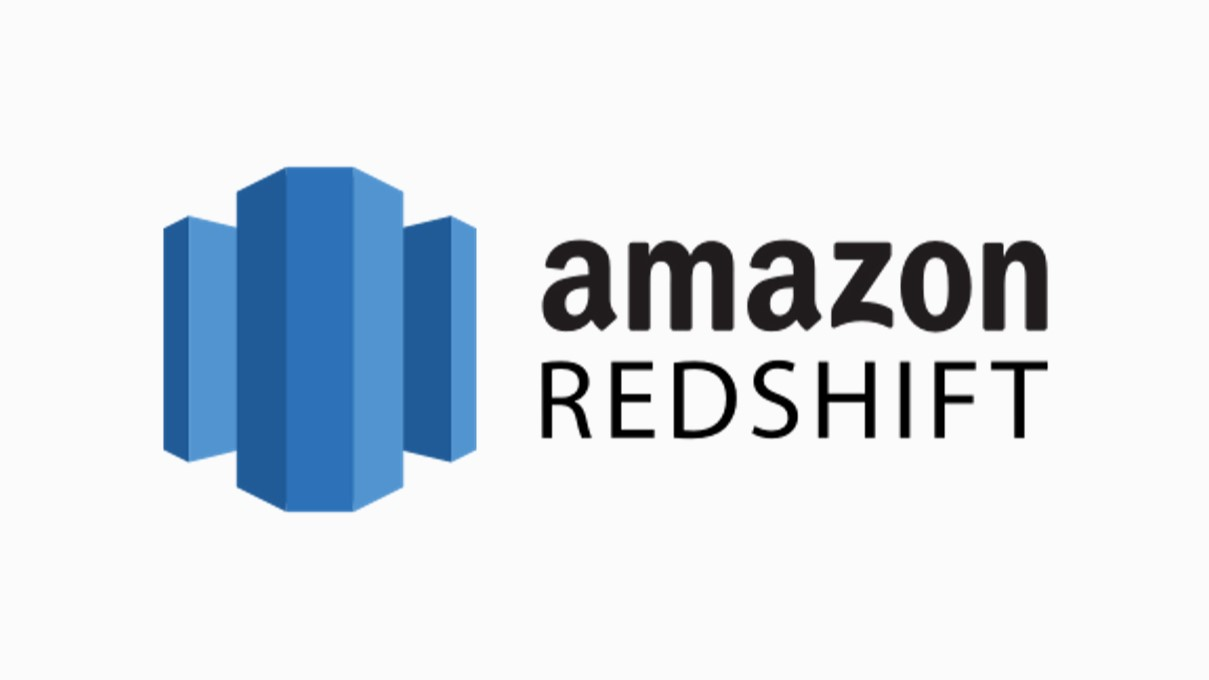
Amazon Redshift is a fully-managed, cloud data warehouse solution specifically built for the AWS cloud environment. It offers a familiar interface for AWS users and is a cost-efficient option for analyzing large datasets stored in Amazon S3. Redshift facilitates the processing of petabytes of data in seconds primarily due to its separation of compute and storage and Massively Parallel Processing (MPP) abilities.
Here are some other impressive features of Redshift:
- Zero-ETL Approach: Redshift’s zero-ETL approach makes data querying in near real time possible across various sources. With this feature, you don’t have to build or maintain ETL data pipelines.
- Integration Support: You can integrate Redshift natively with other AWS services such as S3, DynamoDB, and Glue. There are also about 3,500 third-party datasets available in the data marketplace that you can use to query data.
- Concurrency Scaling: In concurrency scaling, new clusters are automatically added within Redshift to support thousands of concurrent users and queries.
Amazon Redshift Pricing
Amazon Redshift has different pricing structures. For Amazon Redshift Serverless, you can get a free trial with a $300 credit and a 90-day expiration toward your storage and compute use. However, there is on-demand pricing that starts at $0.25 per hour. Managed store pricing starts at $0.024 per GB of data per month.
3) Google BigQuery
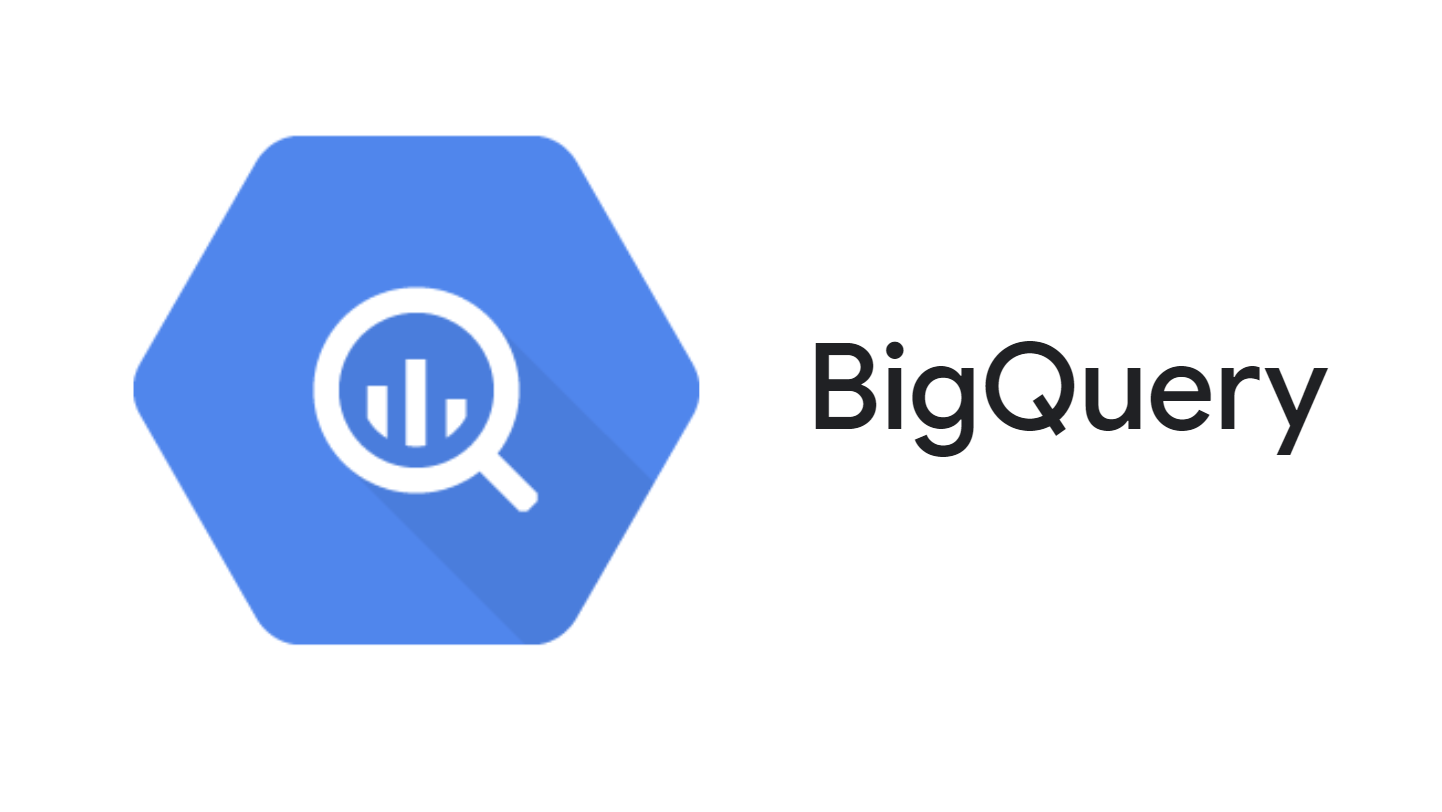
BigQuery is a scalable enterprise data warehouse tool that is among the top warehouse solutions. With its serverless architecture, BigQuery eliminates the need for infrastructure management. A key feature of the platform is its built-in ML capabilities that enable near-real-time analytics.
Let’s look into some other key features of BigQuery:
- Scalability: BigQuery architecture has a separation of storage and compute resources, allowing you to store and analyze large-scale data efficiently. You can query petabytes of data in seconds and terabytes in minutes.
- Supports Diverse Data Types: BigQuery facilitates working with both structured and unstructured data. It also supports open table formats like Apache Iceberg, Hudi, and Delta.
- BigQuery Data Transfer Service: This BigQuery service automates data transfer into BigQuery on a scheduled, managed basis. You can also initiate data backfills to recover from any gaps or outages.
Google BigQuery Pricing
BigQuery offers separate pricing for storage and queries. Storage is differentiated as active ($0.020 per GB/month) or long-term ($0.010 per GB/month). However, the first 10 GB/month is free for both types. Querying has two pricing models: on-demand ($5 per TB, with 1 TB free every month) and flat-rate ($10,000 per 500 slots).
4) Microsoft Azure Data Warehouse Tools
Microsoft Azure is a cloud computing platform that was introduced in 2010. It allows developers to create, test, deploy, and manage applications and services using Microsoft-managed data centers. Azure is a public cloud computing platform that provides Infrastructure as a Service (IaaS), Platform as a Service (PaaS), and Software as a Service (SaaS). It offers 200+ products and cloud services.
Azure’s integration with Azure ML and Power BI provides you with built-in analytical capabilities. It also integrates with multiple data sources, both in the cloud and on-premises. This makes it easier for you to ingest and manage data from other systems.
- Azure SQL Database: For data warehousing applications with up to 8 TB of data volumes and a significant number of active users, Azure SQL Database is a suitable choice. It is a fully managed PaaS database engine that takes care of most database maintenance tasks, including updating, patching, backups, and monitoring.
- Azure Synapse Analytics: Data integration, big data analytics, and enterprise data warehousing are all part of Microsoft Azure Synapse Analytics. It employs machine learning technologies for applications and extracts significant insights from any data. By delivering an end-to-end analytics solution, Azure speeds up project development.
Microsoft Azure Pricing
Azure SQL database serverless compute pricing starts at $0.52 per V-core/hour, where V-core is one hyper-thread. Storage cost is $0.115 per GB/hour, with a minimum of 5GB storage and a maximum of 4 TB.
Azure Synapse Analytics pricing varies by region. You can select pricing by hour or by month. There are different pricing options for data integration, warehousing, big data analytics, and other services.
5) Oracle Autonomous Data Warehouse
Oracle Autonomous Data Warehouse (ADW) is a cloud-based data warehouse service that handles all the complexities of data warehouse development, data protection, and data-driven application development.
The setting, safeguarding, regulating, scaling, and backing up of data within the data warehouse are all automated using this technology. A lot of self-service tools are put in to help analysts, data scientists, and developers be more productive.
Some of the essential features of the Oracle Autonomous Data Warehouse include:
- Oracle Autonomous Database is core to the data lakehouse, serving as an analytical engine and data repository optimized for performance.
- The Oracle Autonomous Data Warehouse self-monitors system performance, auto-adjusting as workloads, queries, and users change over time. This autonomous optimization ensures consistently high performance despite variations.
- Oracle ADW supports varied data types and models. This includes graph, JSON, spatial, and relational data. As a result, ADW is versatile for a range of analytical requirements.
Oracle Autonomous Data Warehouse Pricing
The cost of an Oracle Autonomous Data Warehouse is typically around $.336 ECPU per hour when using the dedicated infrastructure. This requires you to pay based on the amount of equivalent CPU (ECPU) your database utilizes per hour.
6) Snowflake
Snowflake is a cloud-based data warehouse tool that offers a framework that is quicker, easier to use, and more adaptable than traditional data warehouses. Snowflake has a comprehensive SaaS (Software as a Service) architecture since it runs entirely in the cloud. The platform is built to run on cloud environments like Azure, AWS, and GCP.
Snowflake makes data processing easier by allowing you to work with a single language, SQL. This facilitates tasks such as data blending, analysis, and transformations on a variety of data types.
Let’s look into some key Snowflake features:
- Faster Query Execution: The platform uses varied optimization techniques, such as caching and automatic indexing, for faster query execution.
- Time Travel: With Snowflake’s time travel feature, you can track changes with your data tables and schemas for 90 days. This also allows you to restore any version of a few objects within the period.
- Zero Copy Cloning: If you want to generate copies of schemas, databases, or tables swiftly and cost-effectively in near-real-time, Snowflake’s cloning feature will come in handy. When you clone an object, it doesn’t duplicate the entire storage content; instead, it only manipulates the metadata.
Snowflake Pricing
Snowflake pricing follows a per-second billing. The price varies by region, platform, and the selected pricing tier. Compute cost is billed per second, with a minimum of 60 seconds. You can opt between Standard, Enterprise, Business Critical, and VPS.
7) IBM Db2 Warehouse
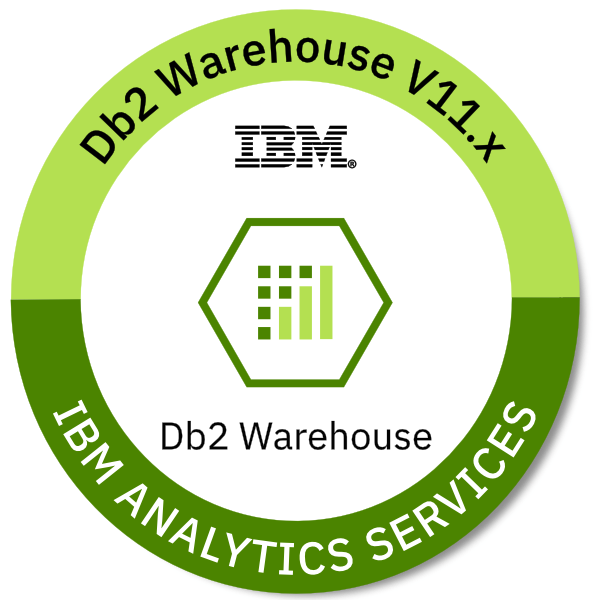
IBM Db2 Warehouse is a scalable data warehouse built for integration with IBM’s analytics ecosystem. It allows you to store and analyze data across varied sources. The system offers built-in ML tools that you can exploit to train and deploy ML models within the ecosystem.
Here are some note-worthy features of IBM Db2 Warehouse:
- Supports Varied Integrations: There are native integrations available for various IBM products, including InfoSphere Data Replication, Data Studio, and Segment. You can also integrate the platform with BI tools like Microsoft PowerBI and Google Looker, as well as ETL tools like Informatica and DataStage.
- Ease of Use: IBM Db2 Warehouse has an intuitive UI and REST API, allowing easy management of resources.
- Data Security: The platform offers features like data encryption, access control, and audit logging for data security and compliance.
IBM Db2 Warehouse Pricing
You have the option of choosing from nine pricing tiers. The most basic tier is the Flex One, which provides a single partitioned instance. It is a suitable choice if you’re just starting off with a data warehouse project. The compute cost for this tier is about $0.68 per instance/hour.
8) Teradata

Teradata is an enterprise-grade data warehouse solution for collecting and analyzing vast amounts of data in the cloud. With its super-fast parallel querying infrastructure, Teradata speeds up your access to actionable insights. The Teradata VantageCloud can handle large data volumes and support complex analytical workloads.
Let’s look into some essential features of Teradata:
- Supports Parallel Processing: Teradata is known for its MPP architecture. It facilitates processing data across multiple nodes or components simultaneously. Teradata also allows multiple Access Module Processors (AMPs) to work on requests concurrently.
- Varied Analytics: From descriptive analytics and predictive analytics to autonomous decisioning and machine learning functions, Teradata has varied analytical capabilities.
- Security: Teradata supports access controls, password controls, authentication, and network traffic encryption, among other methods for securing data.
Teradata Pricing
Teradata offers a pay-as-you-go model. For Teradata Vantage, the compute pricing is as low as $4.80/hour. Block storage charges are about $1,445/TB per year, and object storage is about $276/TB per year. Data transfer charges are separate.
9) SAP Data Warehouse Cloud
SAP Data Warehouse Cloud is an integrated data management platform that maps all of an organization’s business operations. It’s a high-end application package for open client/server platforms and one of the greatest data warehouse tools in the market. SAP Data Warehouse Cloud has established new benchmarks for providing the best commercial data management and warehousing solutions.
Built on the SAP Data Warehouse Cloud is SAP Datasphere, one of the best data warehouse tools. The foundation for this tool is the robust in-memory power of the SAP HANA Cloud database. Some of the notable features of SAP Datasphere include its business data fabric, extensive integration suite, and automation tools.
Here are some impressive SAP Data Warehouse Cloud features:
- Hybrid and Multi-cloud Support: It can run across public clouds like AWS, Azure, GCP, and private clouds to support hybrid and multi-cloud needs.
- Advanced Analytics: You can use the platform’s integrated BI and analytics tools to perform ad-hoc queries, create reports, and build visualizations.
- Easy-to-use Interface: With its drag-and-drop interface, you can create data models, build hierarchies, and define relationships without requiring extensive coding.
SAP Data Warehouse Pricing
SAP Data Warehouse pricing is primarily based on the SAP Datasphere solution. It is structured around a per-month subscription model using Capacity Units (CU) as the primary metric.
10) PostgreSQL Data Warehouse Tool
PostgreSQL is an open-source and cloud-based database management system. It is an enhanced version of SQL and facilitates various SQL functions like foreign keys, subqueries, and other user-defined functions. The platform can handle large volumes of data and also supports SQL and JSON querying. With its authentication features, it is quite a secure data warehouse tool. Due to its faster data reading and writing speed, PostgreSQL is a simple and powerful data warehouse solution.
Some critical PostgreSQL features include:
- Scalability: Designed for handling large data volumes, PostgreSQL allows scaling up and out to accommodate increasing workloads via partitioning, replication, and horizontal scaling.
- Robust Security: PostgreSQL offers various security mechanisms like authentication, access controls, and encryption that enable secure data warehousing.
- Flexibility & Power: It provides a highly flexible and powerful solution for analytics and data warehousing needs. PostgreSQL also offers rich features and ease of use and management.
PostgreSQL Pricing
PostgreSQL is open source and hence free of cost.
11) Micro Focus Vertica
Micro Focus Vertica is an SQL data warehouse that uses MPP to speed up querying. It is quite simple to use and is highly scalable. As a column-based relational database, it groups data together before storing it on a disk by column. To optimize storage, it deploys compression. It also enables predictive maintenance and network optimization for business enterprises.
Vertica has built-in analytics capabilities, including machine learning and time series-based features. It supports standard programming interfaces like OLE DB.
Let’s look into some Micro Focus Vertica features:
- Optimized for Analytics: Vertica leverages columnar storage and Massively Parallel Processing (MPP) architecture to provide fast query performance that is vital for data warehousing workloads.
- Flexible Scalability: Its shared-nothing architecture allows linear scaling of storage and processing power to handle increasing data volumes and user concurrency.
- Efficient and Secure: Vertica offers built-in analytics capabilities, standard interfaces, and compression to accelerate secure analysis while optimizing storage.
Micro Focus Vertica Pricing
Vertica has a free community tier that goes up to 1TB and three nodes. With the paid cloud tier, you get billed on a per-hour basis. The computing costs vary by region and the fulfillment option. However, pricing starts at $2 per hour.
12) DynamoDB
Amazon DynamoDB is a NoSQL data warehouse service that supports key-value and document data structures. You can get progressive scalability while using DynamoDB. Used for OLTP use cases, it enables high-speed data access when there is a need for operations on many records simultaneously. It also allows automatic scaling per your application load and pay-per-what-you-use rating and no servers to manage. As a result, you can use DynamoDB for serverless applications.
Here are some DynamoDB features worth noting:
- DynamoDB Accelerator (DAX): DynamoDB comes with DAX. It is a fully managed, highly available caching service. DAX can help shorten the time needed to read tabulated data from milliseconds to microseconds.
- Flexibility: DynamoDB supports both key-value and document data models, providing you with flexibility for data storage needs.
- Integrates with Other AWS Services: The platform can integrate with S3 for bulk export/import, Kinesis Data Streams for advanced streaming applications, and CloudWatch for monitoring and diagnosing system performance.
DynamoDB Pricing
DynamoDB offers a free tier with 25GB of data storage and 2.5 million read requests. Beyond the free tier, you can choose either on-demand pricing or provisioned-capacity pricing.
13) Cloudera
Cloudera is a data warehousing platform that offers multi-functional analytics. A cloud-based platform, it removes data silos and makes drawing data insights faster. Whether your data is on private, public, or hybrid clouds, it helps you secure and manage all your data. It is cost-efficient as it handles data from the edge. You can infer business insights through artificial intelligence and machine learning using its augmented tools. This includes Data Visualization, Hue, and Workload XM, which make querying and visualization easier.
Some essential Cloudera features include:
- Automatic Configuration: The Cloudera Data Warehouse service can automatically configure each data warehouse for you. However, you can adjust certain settings to suit your needs.
- Auto-scaling: Cloudera’s auto-scaling feature facilitates both scaling up and down virtual warehouse instances. This helps meet your varying workload demands and save costs on cloud resources when not needed.
- Auto-suspend: You can set an AutoSuspend Timeout when creating a virtual warehouse. It sets the maximum time a virtual warehouse can idle before shutting down. This helps avoid payment for unused compute resources.
Cloudera Pricing
Cloudera data warehouse billing is on an hourly basis. It starts at $0.72 per hour/instance.
14) MarkLogic
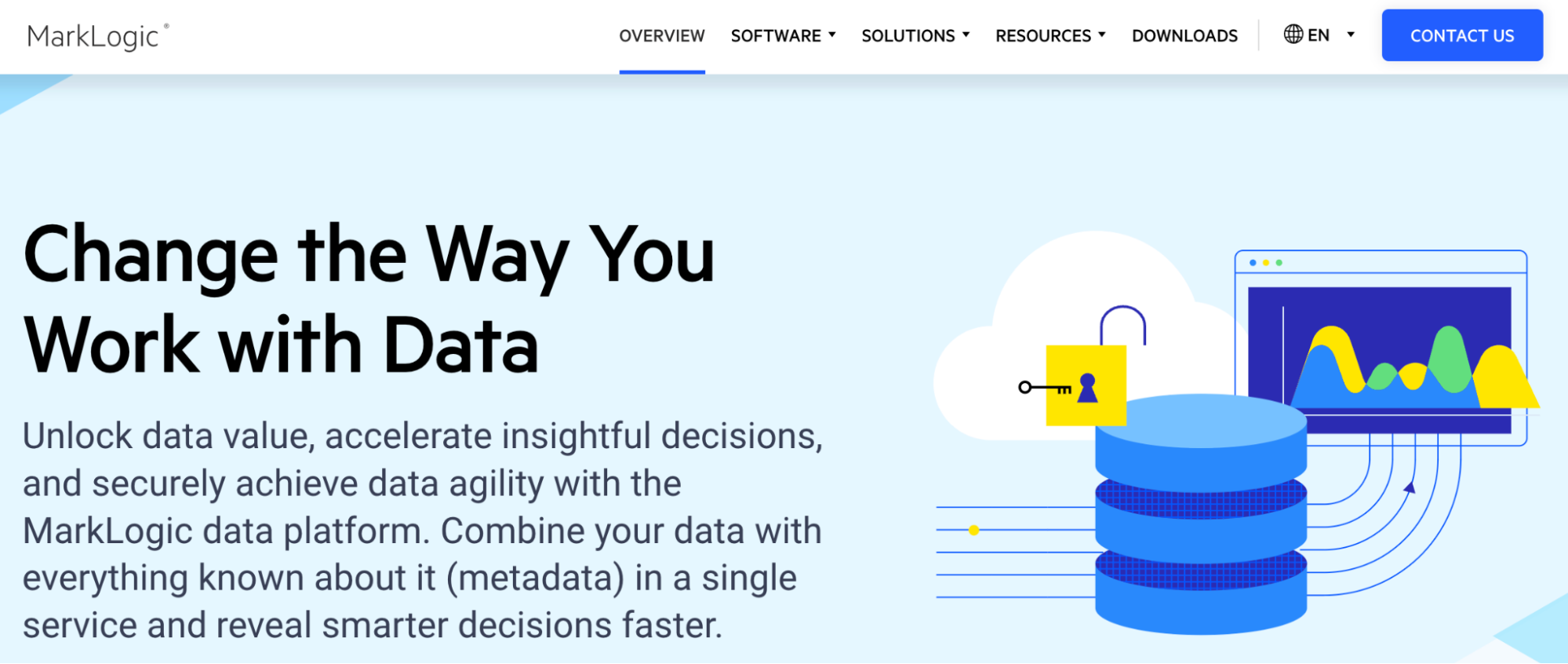
MarkLogic is a multi-model NoSQL database that offers powerful querying and several application services. As a schema-agnostic platform, you can use it to ingest data of any type or form. It supports JSON, XML, RDF, geospatial data, and massive binaries like videos. With its built-in search engine, you can easily query data after loading it.
Let’s look into some essential features of MarkLogic:
- Tiered Storage: MarkLogic offers a tiered storage add-on that you can use to store and manage data in different tiers on the basis of cost and performance trade-offs. This includes traditional local or shared disk storage, flash storage, HDFs, and Amazon cloud storage.
- HA/DR: With enterprise-grade High Availability and Disaster Recovery, MarkLogic ensures your data is always available. The scheduled downtime is minimized; this reduces risk and avoids interruptions.
- Flexible Deployment: Whether on-premises, in the cloud, or virtualized, you can build your applications and run them anywhere. This lets you deploy the applications anywhere and gives you the flexibility to make changes.
MarkLogic Pricing
Billing in MarkLogic is based on consumption. It offers three pricing tiers: low priority fixed tier (storage – $0.10 per GB/month and compute – $0.074 per hour/MCU), standard on-demand (storage – $0.10 per GB/month and compute – $0.125 per hour/MCU), and standard reserved (storage – same as others and compute – $0.071 per hour/MCU).
15) MariaDB

MariaDB is a popular open-source relational database management system that you can use for data warehousing. It provides a familiar SQL interface, making it well-suited if you’re already invested in the MySQL ecosystem and are comfortable with relational databases. MariaDB is a robust and secure option that offers a familiar and cost-effective solution.
Here are some key MariaDB features:
- Improved Performance: MariaDB performs better than MySQL with respect to querying views. While MySQL queries all tables connected to the desired view, MariaDB only queries the query-specified tables.
- Storage Engines: MariaDB supports multiple storage engines, including InnoDB, Spider, and TokuDB.
- Supports Diverse Data Types: The platform supports several SQL data types, including numeric, date, time, and string, among others.
MariaDB Pricing
For MariaDB Cloud, the pricing starts at $0.45 per hour for the Foundation tier. However, detailed pricing details are not available from the company.
Critical Factors to Consider While Selecting the Right Data Warehouse Tool
Choosing a data warehouse tool that meets all of your company’s demands necessitates consideration of some essential factors. When selecting a data warehousing tool, keep the following four aspects in mind:
1) Cloud vs On-Premise
The first consideration when selecting a data warehouse tool is whether to employ a cloud or on-premise data warehouse solution. A cloud data warehousing solution is the best option if you want a low-cost, effective solution with no extra servers, hardware, or maintenance fees.
On the other hand, if data security is a top issue for your company, an on-premise data warehouse design may be the better option since it allows complete control over data security and access. However, this solution isn’t cost-effective and requires high maintenance.
2) Performance and Scalability
Data warehouse tools provide varying levels of performance. You should use a solution that guarantees that your data is cleaned, de-duplicated, transformed, and loaded appropriately to keep your data warehouse performing at its best. Apart from this, you should select the tool that scales with your business needs.
Some data warehouse tools and storage are horizontally scalable, which means they provide optimal performance even as your data warehouse grows in size. If properly tuned, such data warehouse tools can be cost-effective.
3) Integrations
Integration of many data sources, such as cloud sources, streaming applications, and databases, is common in business development, resulting in huge amounts of heterogeneous data. In this case, choosing a data warehouse tool that can combine data from many applications and information systems is critical.
4) Use Case
It doesn’t matter how powerful a data warehouse tool is if it isn’t tailored to your company’s needs. Some tools excel at handling large datasets, while others excel at handling smaller ones. Consider the kind of data you’ll be working with the most while assessing your options. If your data is currently kept in a number of systems or formats, find a solution that can handle the increasing complexity.
5) Cost
You need to keep in mind several things when it comes to data warehouse cost when choosing a solution for yourself from different vendors of data warehouse tools. Take into account your requirements, such as what you want from the tool, the volume of your data, and its maintenance requirements. There are many open-source tools for BI and reporting that you can use, but they require skilled developers for maintenance and coding. When it comes to storage, cloud-based tools are best as they provide scalable storage and charge based on the amount of data you are storing.
6) Automation
Automation is essential in today’s fast-paced world. Many data warehouse tools can help you save time and money while reducing security risks. Traditional data warehousing tools offer automation at every step with workflow automation and data model design patterns. They reduce the cumbersome process of SQL querying by ensuring that the design, data mapping, and ETL code are generated automatically.
Following the above data warehouse best practices, you can maximize the value and longevity of your solution.
Conclusion
Now, you’ve gained a basic understanding of data warehouse and working with data warehouse tools. You understood the need for the data warehouse tools for your use cases. In addition to this, you also learned some of the important factors that you need to keep in mind while selecting the right data warehousing tool.
With a comprehensive overview of the 10+ popular data warehouse tools used in the industry, you can assess which suits your needs the best. Extracting complex data from a diverse set of data sources like databases, CRMs, project management tools, streaming services, and marketing platforms can be quite challenging. This is where a simpler alternative like Hevo can save your day!
Automate your pipelines and optimize your data strategy with ease. Sign up for a 14-day free trial today!
Frequently Asked Questions
1. What is the tool used for data warehousing?
Some of the popular tools used for data warehousing include:
a) Amazon Redshift
b) Google BigQuery
c) Snowflake
2. What are the 3 data warehouse models?
The three data warehouse models are:
a) Enterprise Data Warehouse (EDW)
b) Operational Data Store (ODS)
c) Data Mart
3. What are the four 4 stages of a data warehouse?
The four stages of a data warehouse are data sourcing, data integration, data storage, and data presentation and access.
4. Is SQL a data warehouse tool?
SQL is a programming language and not a data storage. However, you can use SQL to create, modify, and query databases that store structured data in the form of tables with rows and columns.








